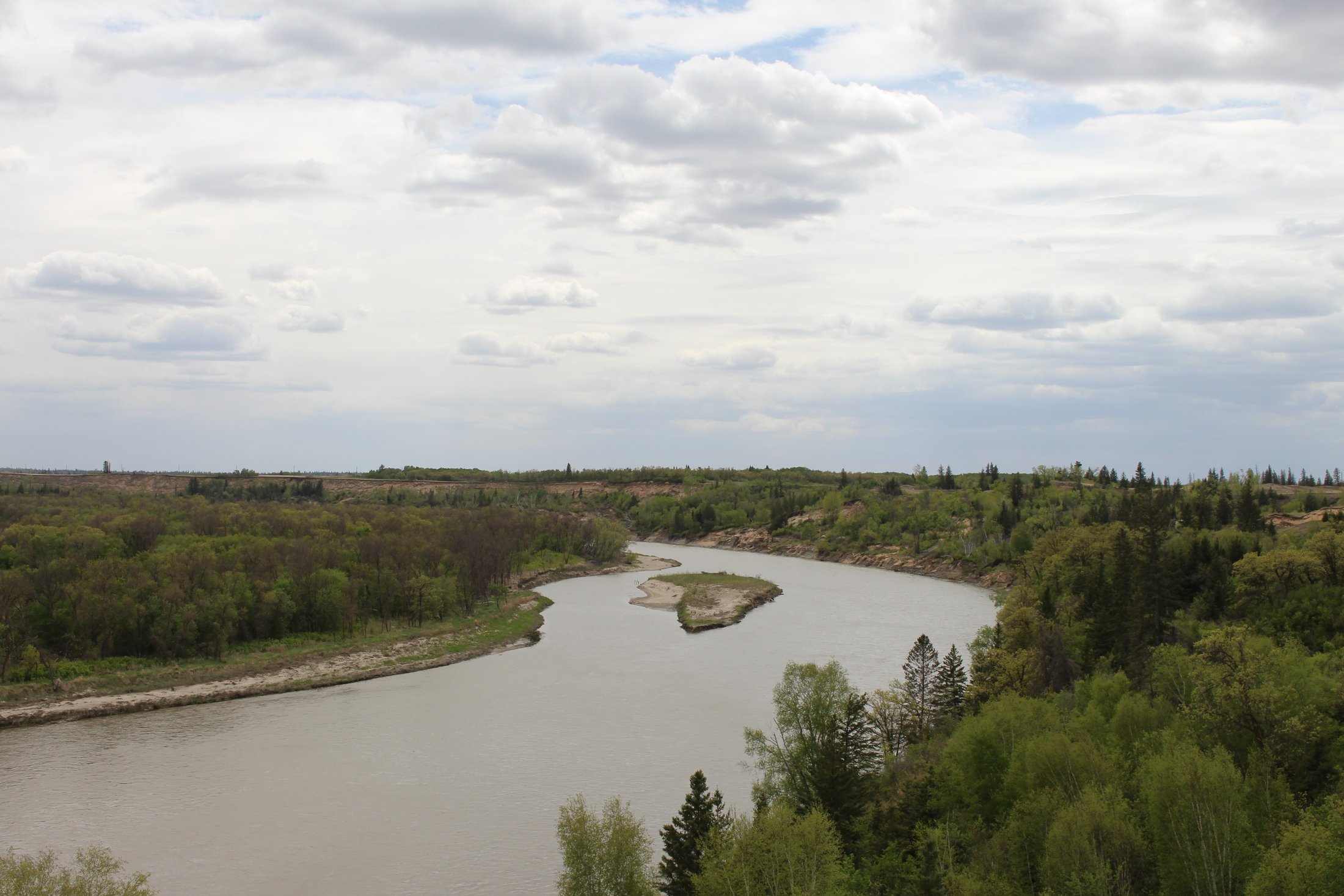
What’s scarier for Canadian communities — floods, or flood maps?
When maps showing areas most likely to flood are outdated, it puts people and property...
At times the race looked to be a nail-biter, but the Manitoba election results are in and the New Democratic Party has clinched victory, ousting the Progressive Conservatives after seven years in power.
NDP Leader Wab Kinew has been elected Manitoba’s premier and Progressive Conservative Heather Stefanson has resigned as her party’s leader after a campaign that saw the two spar over healthcare, crime and the cost of living.
Kinew’s victory speech on Tuesday night reiterated the party’s steadfast promise to fix healthcare, the NDP’s central election focus, while strengthening the provincial economy. Mention of climate change and environment policy were notably absent — as was the case most of the campaign.
Despite a lack of ambitious campaign promises on environmental issues, there are clear differences in the parties’ climate policies.
“You will not have to fight me to take action on climate change, instead we will fight together against global warming,” Kinew said in August.

The PCs, hinging their campaign on an economic revival for Manitoba, repeatedly took aim at carbon pricing and federal conservation targets as hindrances to economic development. The NDP, meanwhile, stuck predominantly to the status quo with promises to bring Manitoba up to par with the rest of the country.
While it’s unknown what exactly will change, it is clear there’s a new philosophy on climate change from the top seat of power.
From parks to mines to utility prices and beyond, here’s what Kinew’s NDP government will mean for Manitoba’s environment.
It’s official: Manitoba will not go back to court over carbon pricing like former premier Heather Stefanson had hoped, but there is still a plan to keep the price of gas — and power — under control.
Manitoba’s NDP pledged to put a temporary freeze on utility rates, meaning electricity and natural gas bills shouldn’t rise in the coming months. The party also promised to temporarily axe a 14-cent-per-litre flat fee the province collects at the pump.
Energy prices were in focus throughout the campaign, as the Tories promised to challenge the feds in court over carbon pricing — for a second time. The NDP didn’t wade far into the fray on carbon levies, but Kinew said he would aim to have a larger share of the levy returned to provincial coffers and would work collaboratively — rather than combatively — with the feds to “bring home a better deal for Manitobans.”
The NDP has committed to a carbon-neutral economy. But it’s not clear what exactly that will look like.
While in power, the Conservatives never agreed to a net-zero strategy, instead releasing energy plans touting the predominantly hydroelectric power grid and remaining committed to natural gas.
While it’s true Manitoba’s 97-per-cent electric grid helps the province rank among the-least polluting provinces in the country, advocates have long stressed there’s work to do to reduce pollution from transportation and heating.

The NDP has promised it’ll chip away at provincial carbon pollution while creating new jobs designed to weather the shift to a carbon-neutral economy. The party has made cursory commitments to reducing emissions to 45 per cent below 2005 levels in the next seven years, updating Efficiency Manitoba’s mandate to include emission-reduction targets and providing more funding for public transit, active transportation, waste reduction and urban forests.
The party has also promised to restore funding to environmental non-profits that had been clawed back under the previous government.
So far, the party has suggested it would develop a clean energy hub to expand Manitoba Hydro’s electric capacity, introduce new hydrogen-power generation projects and leverage the province’s manufacturing industry to make green energy a reality.
But those are ideas — not a formal plan.
Amid a campaign full of promises to put more money in Manitobans’ pockets, the NDP pledged a handful of programs to “make it affordable to do the environmentally friendly thing” — especially when it comes to vehicles and home energy.
Under the new leadership, rebates will be offered for electric or hybrid vehicles: $4,000 for new cars and $2,500 for used vehicles. Kinew emphasized the goal is to make electric cars accessible to lower- and middle-income households.

He acknowledged the extra pressure electrification will put on the power grid, promising plans down the line to expand provincial power capacity.
The party has also pledged 5,000 homes will be hooked up to geothermal heating loops — currently considered one of the least polluting and most cost-effective ways to regulate indoor heat — free of charge.
The NDP estimates this will cost $130 million, but will generate significant return on investment. To realize this commitment, the party has promised to invest $5 million to build a workforce trained to install geothermal systems. The party estimates this will generate upwards of 1,000 new clean energy jobs.
Manitoba’s woeful record on protected areas may be set to change after the Manitoba election results, as the NDP has promised to protect 30 per cent of lands and waters by 2030.
The Tories refused to adopt international protection targets, made glacial progress expanding protected areas, weakened protections in provincial parks and claimed conservation goals would dampen economic development.

The NDP will mark a distinct change in course.
The party has committed to creating a conservation action plan, including steps to protect wildlife, waterways, wetlands and peatlands. It will support the work to establish Indigenous Protected and Conserved Areas.
The NDP has also promised to stop the slow drip of privatization in provincial parks. It’s not clear whether mineral exploration — currently allowed in many parks — will still be permitted.
Under the previous government, the protected areas initiative had been reduced to one full-time staffer working out of the Natural Resources Department while parks staff, resource officers and other environment officer positions had been cut back considerably.
Asked in August whether he would restore staffing to conservation initiatives, Kinew said “repairing the damage of the cuts is a challenge that is going to take many years to accomplish,” but made no specific commitments.
The rumbles of an impending global energy transition have generated significant interest in minerals deemed essential to a low-carbon economy. Many of these minerals — particularly lithium — are found in abundance in Manitoba.

The previous government was setting the stage for a critical mineral boom, offering a host of financial incentives and promising to eliminate regulatory hurdles.
It’s part of why the PC government wasn’t too keen on protected areas; the prospecting industry has been pushing for a suspension of protected areas to allow no-holds-barred exploration.
The NDP has pledged to create its own critical minerals strategy, in partnership with Indigenous communities, but has not outlined any details. The party has remained fairly mum on the mining front and it’s not yet clear whether it will continue to boost the mineral industry or impose more restrictions in the name of environmental protection.
At a mid-September news conference, two Springfield town councillors announced an independent survey of 5,000 Manitobans had found more than 95 per cent oppose Sio Silica’s proposal to mine sand from the community’s drinking water aquifer.
But the future of Sio Silica’s project remains uncertain.
Like his Tory counterparts, Kinew has taken a neutral stance on Sio Silica, deferring decisions about the controversial project to the technical advisory group tasked with reviewing the Alberta company’s proposal to drill nearly 8,000 wells.

The project generated enough public backlash to be referred to the Clean Environment Commission — Manitoba’s independent environmental regulator — for review. The commission’s report found the mine could benefit the province (silica sand is used in several green technologies, including solar panels) but cautioned the risks of using an untested mining method to access the vital aquifer were not fully understood.
Kinew has stressed the party will “listen to the [commission]” but stopped short of expressing a position on the mine itself.
That’s about where the NDP’s outright environment promises stop — but it’s not where Manitoba’s climate challenges end, even after the Manitoba election results are in.
The NDP has been clear it takes the complexities of the climate crisis seriously, stating on numerous occasions it sees climate change as “not just a threat on the horizon” but as a reality “knocking on our doorstep.”
This is a marked turn from the previous government, but many of the NDP’s climate promises have not come with funding promises to match.
The NDP is inheriting a delicate balancing act between restoring the efficacy of the public service and keeping costs low for Manitobans struggling under an affordability crisis. The party has stated it will take a “whole of government” approach to mitigate the impacts of climate change and start transitioning the economy away from carbon fuels.
But with climate almost an asterisk in a campaign heavily focused on the pressing issue of health care in Manitoba, time will tell whether — or at least when — the whole government’s attention will turn to climate.
Updated Oct. 3, 2023, at 11:15 p.m. CT: This article has been updated to include Premier-designate Wab Kinew’s victory speech on Tuesday night.
Updated Oct. 3, 2023, at 10:50 p.m. CT: This article has been updated to include news of Heather Stefanson’s resignation as PC party leader.
Julia-Simone Rutgers is a reporter covering environmental issues in Manitoba. Her position is part of a partnership between The Narwhal and the Winnipeg Free Press.
Enbridge Gas will face Waterloo Region in a hearing before the Ontario Energy Board to renew an agreement that would allow the company to continue...
Continue reading
When maps showing areas most likely to flood are outdated, it puts people and property...

We’re suing the RCMP for arresting a journalist on assignment for The Narwhal. It’s an...

As glaciers in Western Canada retreat at an alarming rate, guides on the frontlines are...